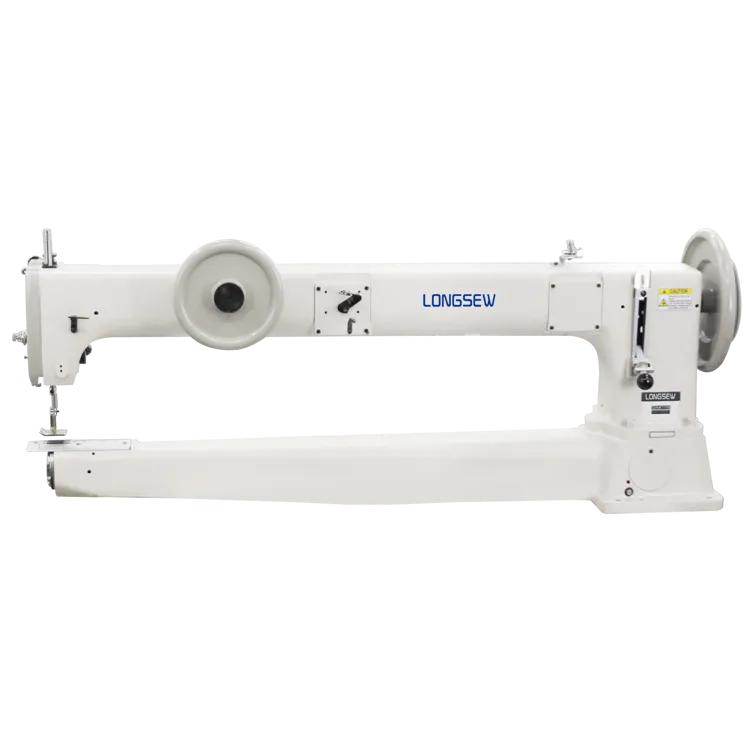Understanding Cover Stitch Functionality on a Serger Machine for Seam Finishing
What is a Cover Stitch on a Serger?
When it comes to sewing, enthusiasts and professionals alike value the versatility and functionality of sergers. Unlike a traditional sewing machine, a serger excels in providing a clean finish on seams and edges but also offers several specialized stitches to enhance garment construction. One of the most useful stitches you can create with a serger is the cover stitch.
Understanding Cover Stitch
A cover stitch, sometimes referred to as a coverstitch, is a specialized stitch primarily used for hemming knit fabrics and attaching elastic. It is well-known for its durability and flexibility, making it a favorite choice among those sewing activewear, t-shirts, and other stretchable garments. Cover stitches differ from regular serger stitches in that they can create a dual line of stitching on the top side while providing a looper thread on the underside, resulting in a professional finish.
Features of a Cover Stitch
The cover stitch is characterized by its two rows of straight stitching on the top side of the fabric, with a chain-like stitch underneath. This construction allows for the fabric to stretch without breaking the stitches, making it particularly effective on knit fabrics. The ability to stretch is crucial when sewing items like leggings, tank tops, or any garment where movement is important.
1. Professional Finish The cover stitch gives a clean, professional look to hems and seams. It’s especially valuable when working with knit fabrics, where conventional hem finishes might look bulky or unrefined.
2. Stretchability As mentioned earlier, the cover stitch is inherently flexible. Unlike straight stitches made with a regular sewing machine, which can snap when the fabric is pulled, a cover stitch maintains its integrity even during rigorous movement.
3. Easy Operation Using a serger to execute a cover stitch often requires fewer steps compared to finishing hems with a traditional sewing machine. Once set up correctly, it can make the sewing process quicker and more efficient.
Setting Up Your Serger for Cover Stitch
If you’re looking to incorporate cover stitches into your sewing repertoire, here’s how to set up your serger
what is a cover stitch on a serger

1. Adjust Your Machine Settings To begin, you’ll need to check if your serger has a cover stitch option. Not all sergers are equipped with this feature. If your machine does, consult the manual to configure the settings properly.
2. Set Up the Needles and Threads For a basic cover stitch, you will generally use two needles (for the top stitches) and one looper thread. The needles will create the standard stitches, while the looper will form the chain stitch underneath. Make sure to consult your user manual for the correct threading sequence.
3. Choose the Right Fabric and Needle Opt for fabrics that are suitable for stretch stitches, such as jerseys or knits. Utilize stretch or ballpoint needles to prevent damaging the fabric fibers when sewing.
4. Test Stitches Before sewing on your main garment, always perform a test stitch on a scrap piece of fabric. This practice ensures that you have the tension and stitch length adjusted to the perfect setting for your fabric.
Tips for Using Cover Stitch
1. Stitch Length Adjustment Adjust the stitch length based on the fabric you are using. Generally, a longer stitch works well for thicker fabrics, while a shorter stitch is ideal for lightweight fabrics.
2. Practice on Scraps Always practice on fabric scraps to refine your technique and settings before moving on to your final project.
3. Use a Walking Foot If your serger has the option, consider using a walking foot to help manage fabric movement, especially on thicker or slippery fabrics.
4. Final Touches Once you’ve completed your cover stitching, don’t forget to give your garment a good press. This will help set the stitches and enhance the professional finish.
Conclusion
The cover stitch is a powerful tool in the world of serging, offering durability, flexibility, and a professional finish ideal for knit fabrics. By mastering this stitch, sewists can elevate their projects, ensuring that garments not only fit well but also look exquisite and are built to last. So, whether you're crafting comfortable loungewear or activewear, the cover stitch can certainly enhance your sewing experience, ensuring your finished products stand out.
-
Heavy Duty Leather Sewing Machine: A Must-Have for Professional LeatherworkNewsMay.28,2025
-
Leather Sewing Machine: Essential for High-Quality LeathercraftNewsMay.28,2025
-
Extra Heavy Duty Sewing Machine for Premium Leather ApplicationsNewsMay.28,2025
-
Walking Foot Cylinder Arm Sewing Machine: Precision and Power CombinedNewsMay.28,2025
-
Industrial Cylinder Arm Sewing Machine: Engineered for High-Performance StitchingNewsMay.28,2025
-
Cylinder Bed Sewing Machine: A Powerful Solution for Precision StitchingNewsMay.28,2025
-
Zigzag Sewing MachineNewsMay.12,2025





























